Have you had Japanese food?
Japanese food has many categories and variations. So you might not be able to complete everything!
I will introduce Japanese food categories totally in this article.
Rice
Almost all Japanese people eat rice every day. I have never heard that some people have an allergy to rice.
Cooked rice is called “Gohan” in Japanese.
I think Japanese rice is especially more delicious than others.

Rice is a staple food and delicious in itself. But it will be difficult to get Japanese rice in foreign countries.
In fact, some Japanese living in Hawaii in the U.S. eat rice, the taste of rice is different from Japanese rice, then one person imports Japanese rice privately. Even in Hawaii, where there is a deep exchange with Japan and many Japanese people live, Japanese rice is not widely available.
So you must eat rice(Gohan) when you come here.
Rice has a grade by variety, new or old, brand, quality, and place of origin. Moreover, the taste of rice varies depending on the rice cooker, how it is cooked, and how the rice is washed. There is no end to the pursuit.
Rice with Something
The more basic way of eating rice(Gohan) is eating it with seasoned vegetables, fish, meat, and something.
Tsukemono(漬物)
The popular things from the old era are “Tsukemono”, which is soaked in salt or seasonings like pickles and can be stored for a certain period of time, such as a few months. Tsukemono is a fermented food that aids in digestive function and is good for your health.
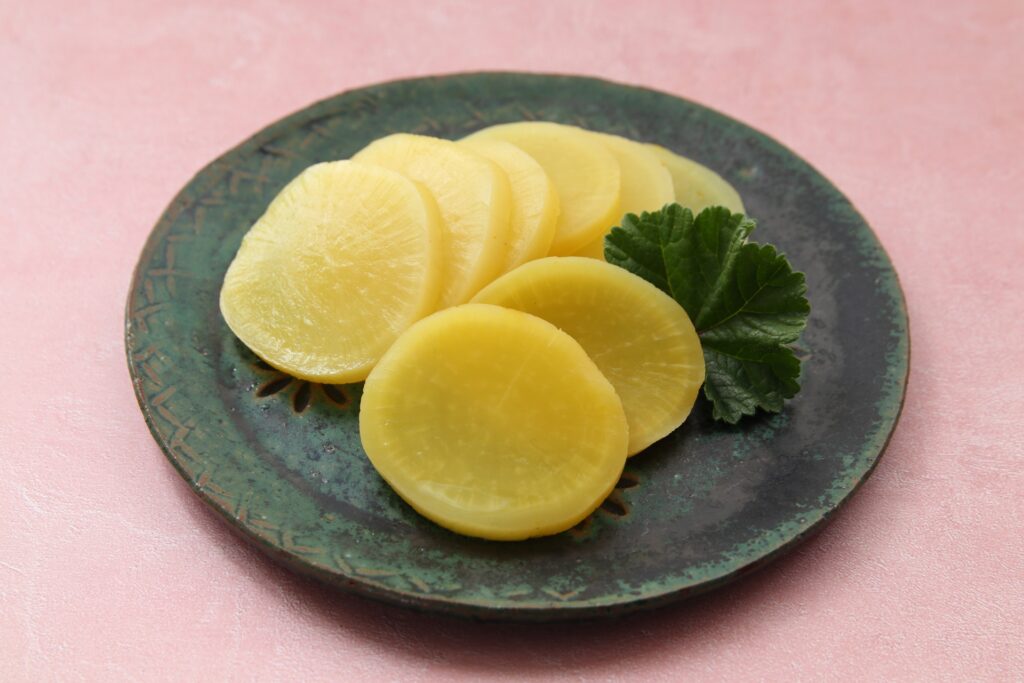
Furikake(ふりかけ)
Furikake is dried, seasoned fish or meat flakes, or seaweed.
The popular things from the old era are “Tsukemono”, which is soaked in salt or seasonings like pickles and can be stored for a certain period of time, such as a few months. Tsukemono is a fermented food that aids in digestive function and is good for your health.
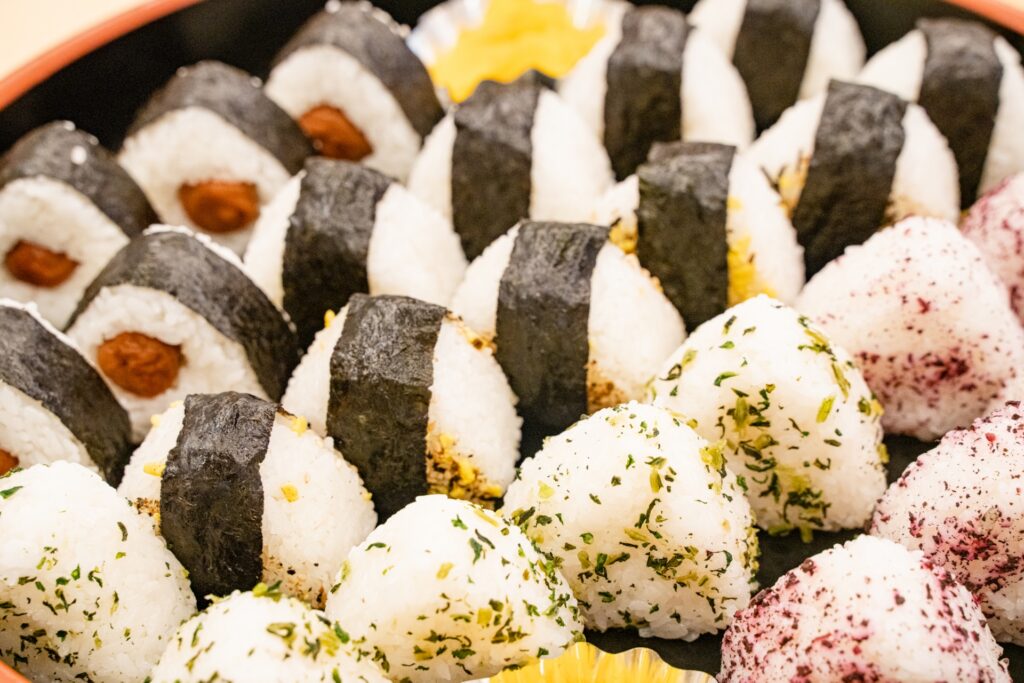
Umeboshi (Japanese salty apricots, 梅干し)
Dried plums are Japanese apricots pickled in salt. Its fruity aroma and its salty taste are addictive when eaten with rice.
Traditional pickled plums contain a considerable amount of salt to prolong their shelf life, but these days, umeboshi are sold with less salt and are not sour as they are.
Dried plums have been a familiar food for children since childhood, so much so that they are a cheap snack for children, known as “dagashi” in Japan.
It also contains citric acid, which helps prevent fatigue and is often included in lunch boxes because it helps prevent spoilage.
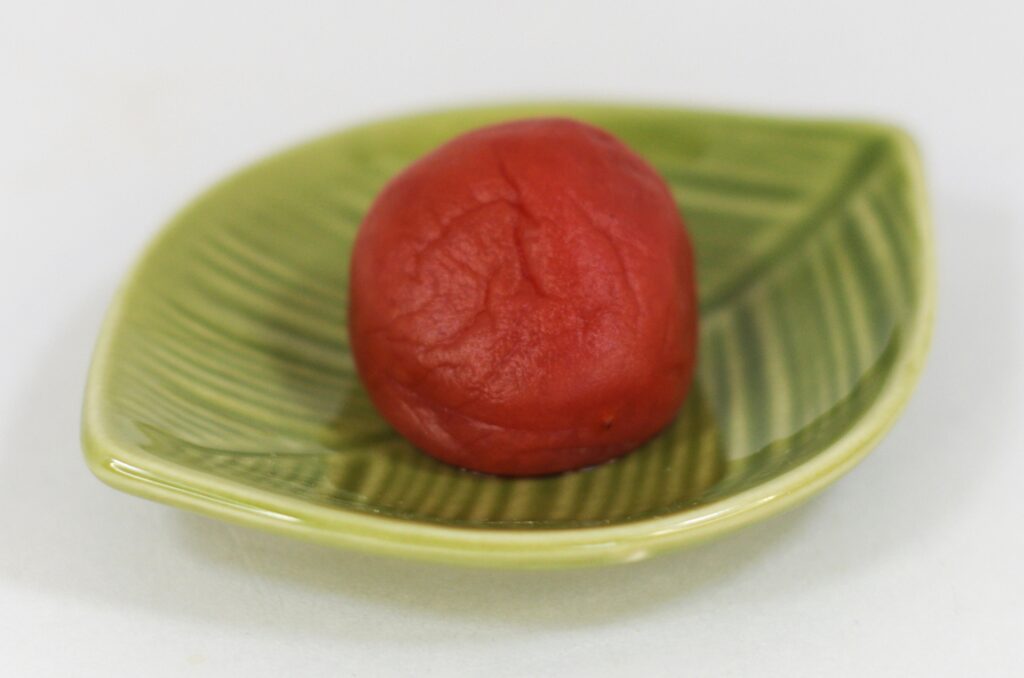
Porched a raw egg (卵かけご飯)
Egg over rice is a widely recognized way of eating rice, although only a limited number of restaurants offer it. Fresh or high-grade eggs are often used, and some restaurants specialize in ogokakegohan.
You can also eat it at home using eggs bought at the supermarket. Soy sauce specially made for ogokakegohan is also sold.
Sometimes a half-cooked egg is used.
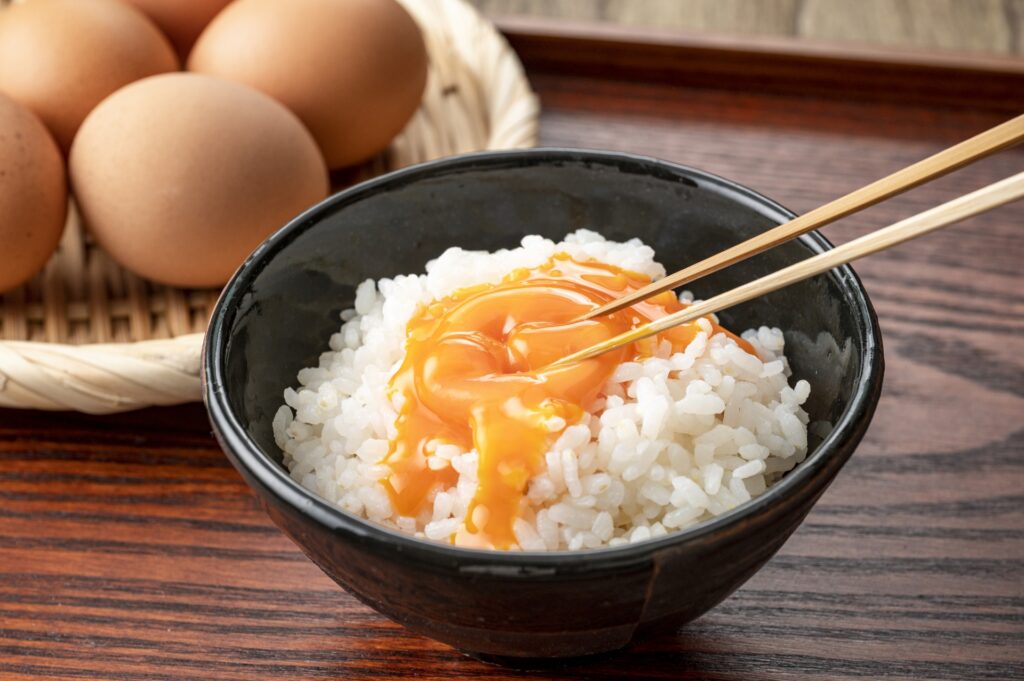
Other things with rice
Nori, Soboro, Tarako, Mentaiko, Nametake, etc. Many kinds of things are eaten with rice.
Japanese people occasionally eat rice with a single food. It is OK that rice with miso soup only.
Donburi (bowl of rice with food on top, 丼)
Donburi is a bowl of rice topped with side dishes. It is easy to eat rice and a side dish together.
You can call it Donburi if you put a side dish on top of a bowl of rice.
Gyu-don (牛丼)
Beef and onions, sliced thin and seasoned with soy sauce, sugar, etc., are placed on top. It is sometimes topped with raw eggs, kimchi, or other pickled vegetables.

Katsu-don (カツ丼)
Cutlets are seasoned meat, coated with egg, flour, and bread crumbs, and deep-fried in oil. It seems that foreigners are already enjoying katsu-don (pork cutlet bowl) and katsu set menus.
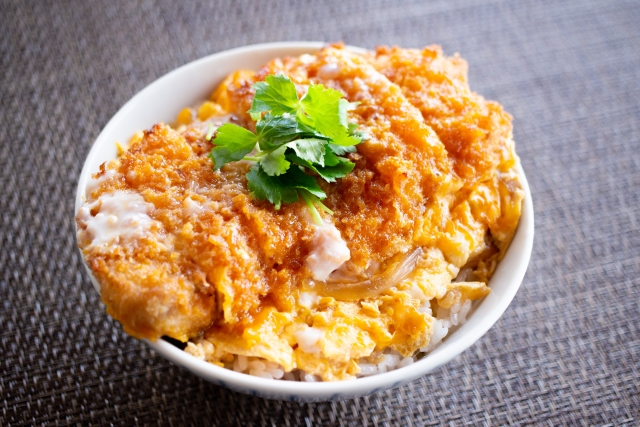
Kaisen-don (海鮮丼)
Kaisendon is a bowl of rice topped with raw fish sashimi. The thing about this is that it is difficult to even for Japanese to eat it with the right amount of soy sauce. A similar, easier-to-eat and even more popular dish is Negi tuna donburi. It consists of minced raw tuna and chopped green onions.
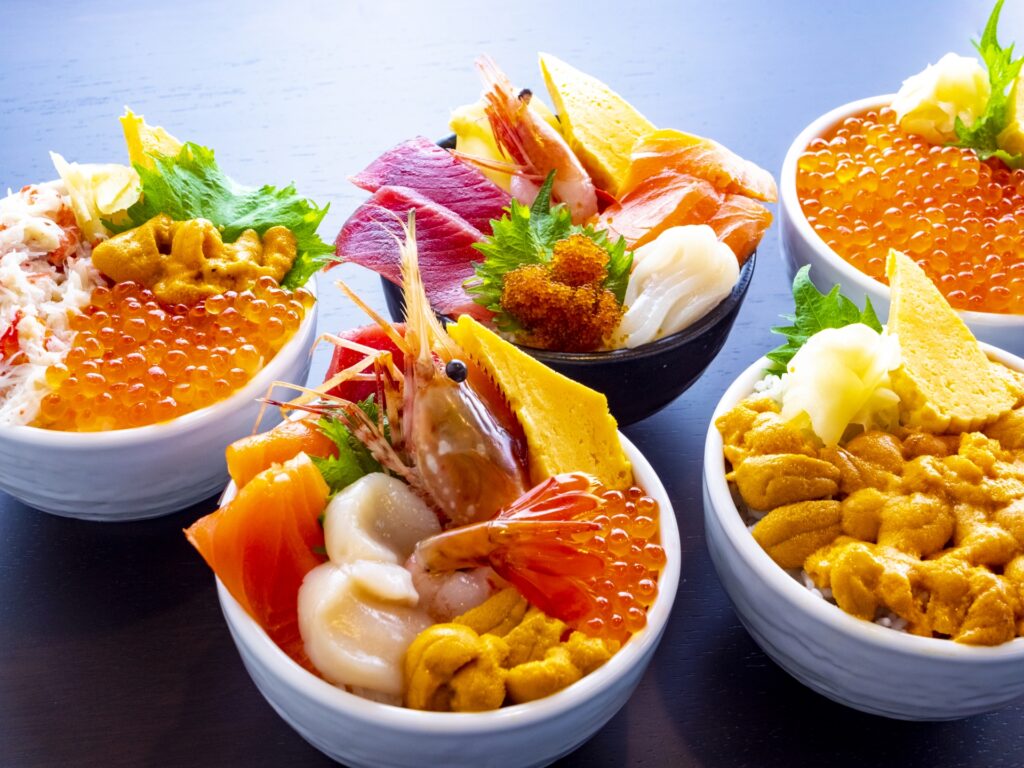
Ten-don (天丼)
This is a bowl of rice topped with tempura. Tempura is wheat-crusted fish or vegetables deep-fried in oil. Typically topped with shrimp, lotus root, shiso leaves, etc.
You can eat at Japanese restaurants, soba restaurants, tempura restaurants, and chain restaurants that serve set menus for one person.
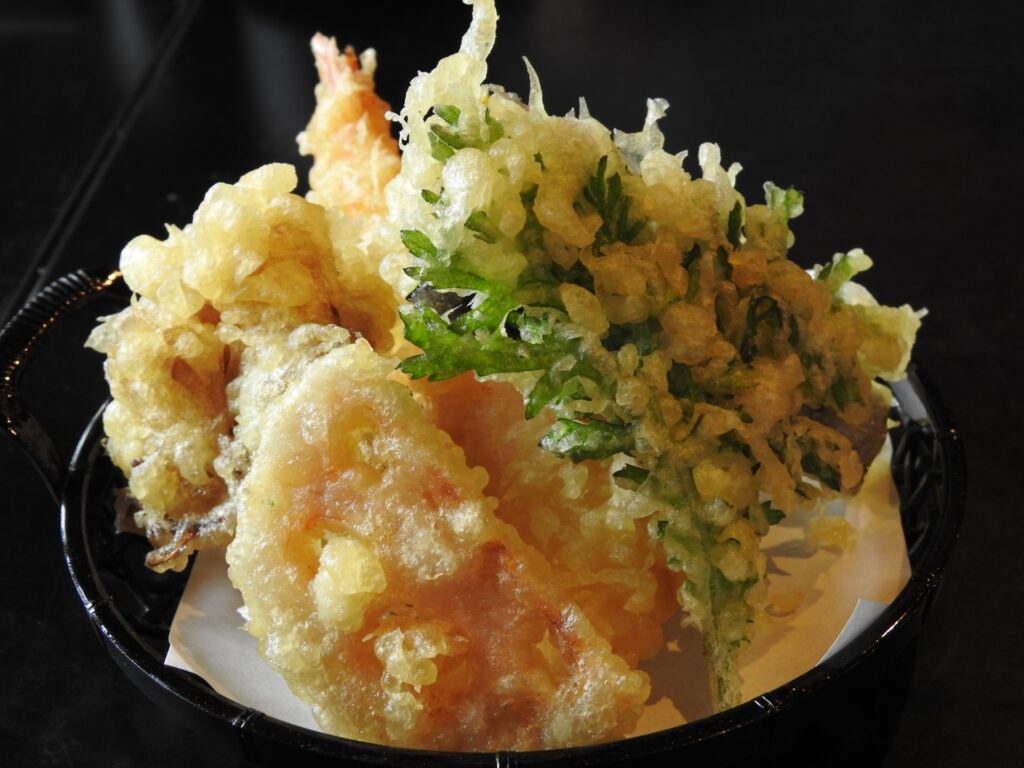
Una-don (鰻丼)
Eels are a bit more expensive fish because of the skill required to grill and process them. It is often seasoned with a sweet soy sauce-based sauce. It is sometimes called unagi-don, una-don, or una-jyu.
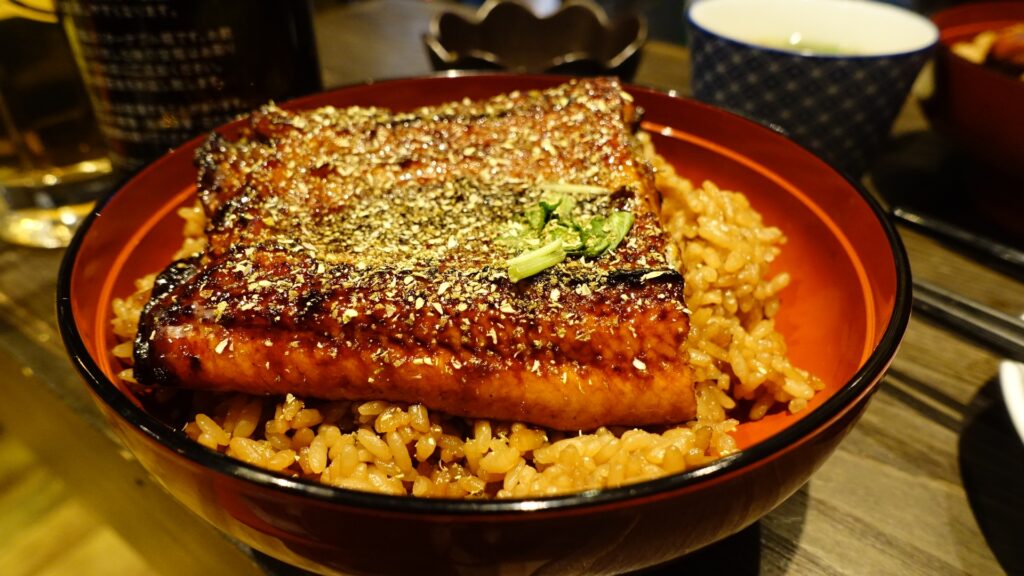
Teishoku (Set meal, 定食)
Teishoku(定食) is a set menu served on a single tray and usually served rice, miso soup, tsukemono, a side dish, and a main dish. Japanese home-style dishes-like menus are often the main course, and Chinese set menus are also common in Japan.
One person eats one set of dishes, which is convenient when eating out alone. There is no need to share a plate of food among several people, so it is easy to split the bill. There are slightly classy Japanese restaurants and inexpensive restaurants that can be used for an everyday one-person meal.
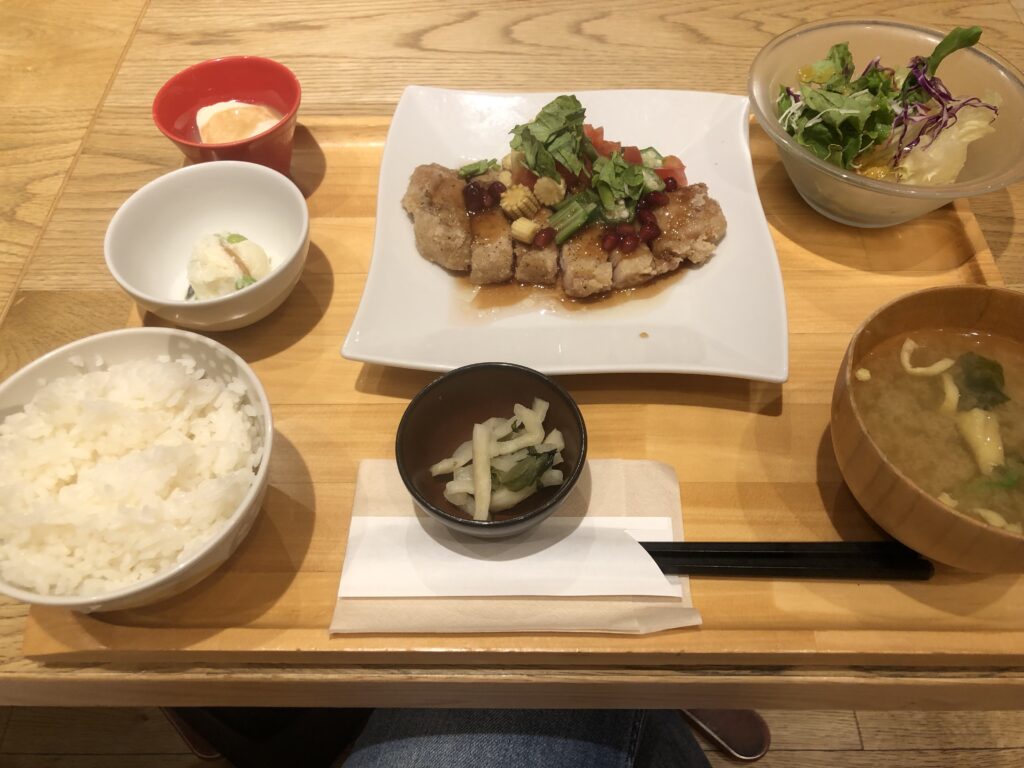
Sushi (寿司)
Sushi, as you know, is a famous and popular Japanese dish.
Sushi is a luxury food in other countries, but in Japan, you can find both inexpensive and expensive restaurants.
Sushi, as you know, is a famous and popular Japanese dish.
Sushi is a luxury food in other countries, but in Japan, you can find both inexpensive and expensive restaurants. So, research sushi restaurants carefully!
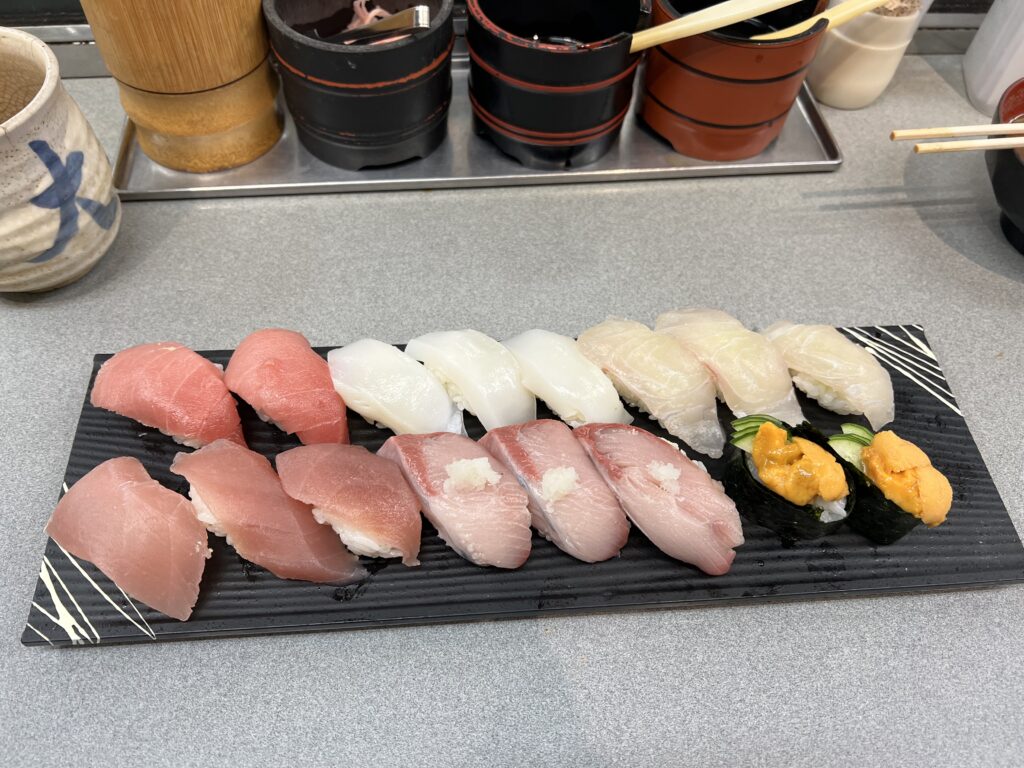
The cheapest sushi restaurants are priced around 100 yen and every plate is the same, but the quality and taste of the fish will vary just by increasing the price above that.
If you want to enjoy sushi and Japanese food in a relaxed atmosphere, go to a high-end restaurant that costs more than 10,000 yen per person.
noodles (麺)
Some noodles are only available in your area, so I can’t introduce all of them, but I will list some of the most common ones.
ラーメン
Ramen is definitely a food you should try when you come to Japan. There is a vast variety of ramen, with many different flavors and different regions favoring different tastes.
There are noodles in soup, noodles dipped in soup, and even ramen noodles arranged to taste like foreign cuisine.
This ramen in the picture is Tori-paitan ramen.
This ramen with a rich chicken broth has been on the rise recently.
There are also traditional soy sauce ramen, tonkotsu (pork bone) ramen, ramen with thin chicken broth, and local ramen. There are also many creative ramen dishes, so I cannot introduce all of them.
I likes 鶏白湯 and Wakayama Ramen. Both have a strong taste.
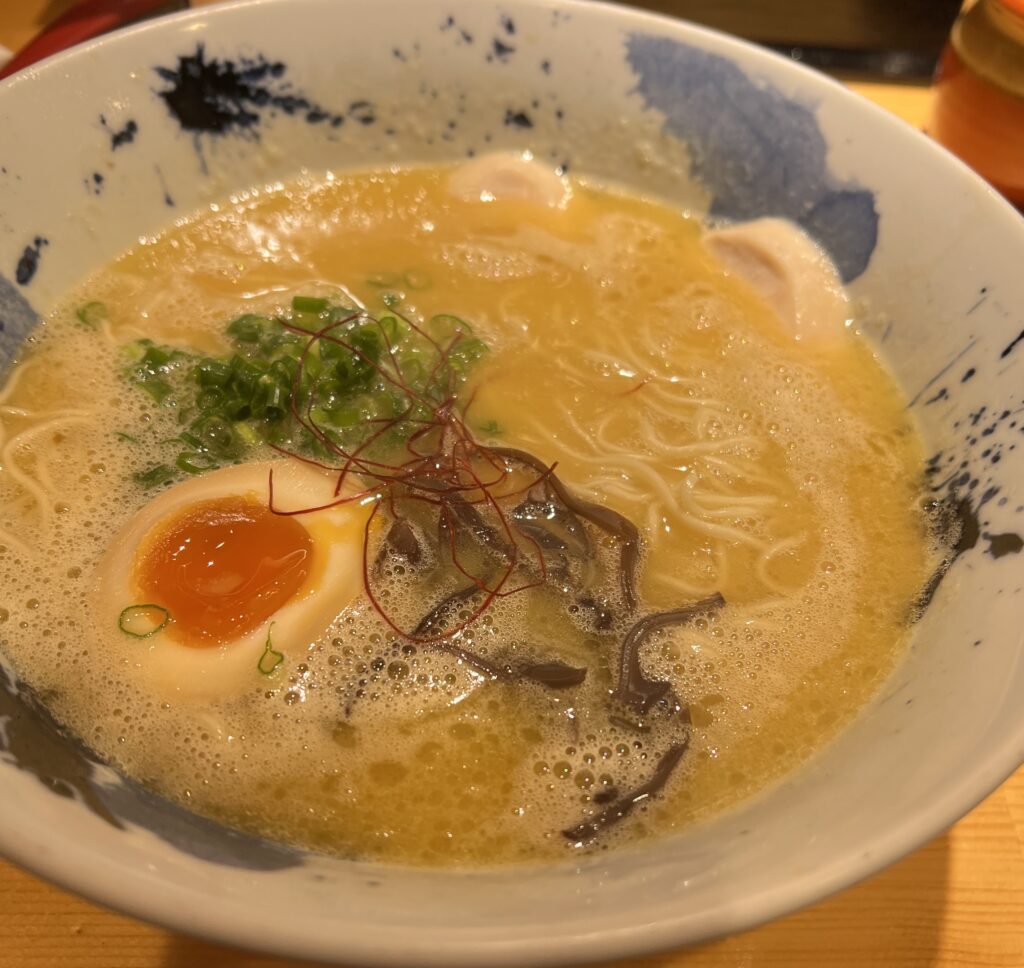
うどん
Udon originated in Kagawa Prefecture in Shikoku, and people in Kagawa go there to eat udon just like we go there for coffee.
Marugame Seimen has expanded overseas, and udon is now available in the United States, the United Kingdom, the Philippines, and other Asian countries. However, the taste is a little different from that of Japan.
It is said that Kukai, the founder of the temple on Mt. Koya in Wakayama, Japan, first created this dish.
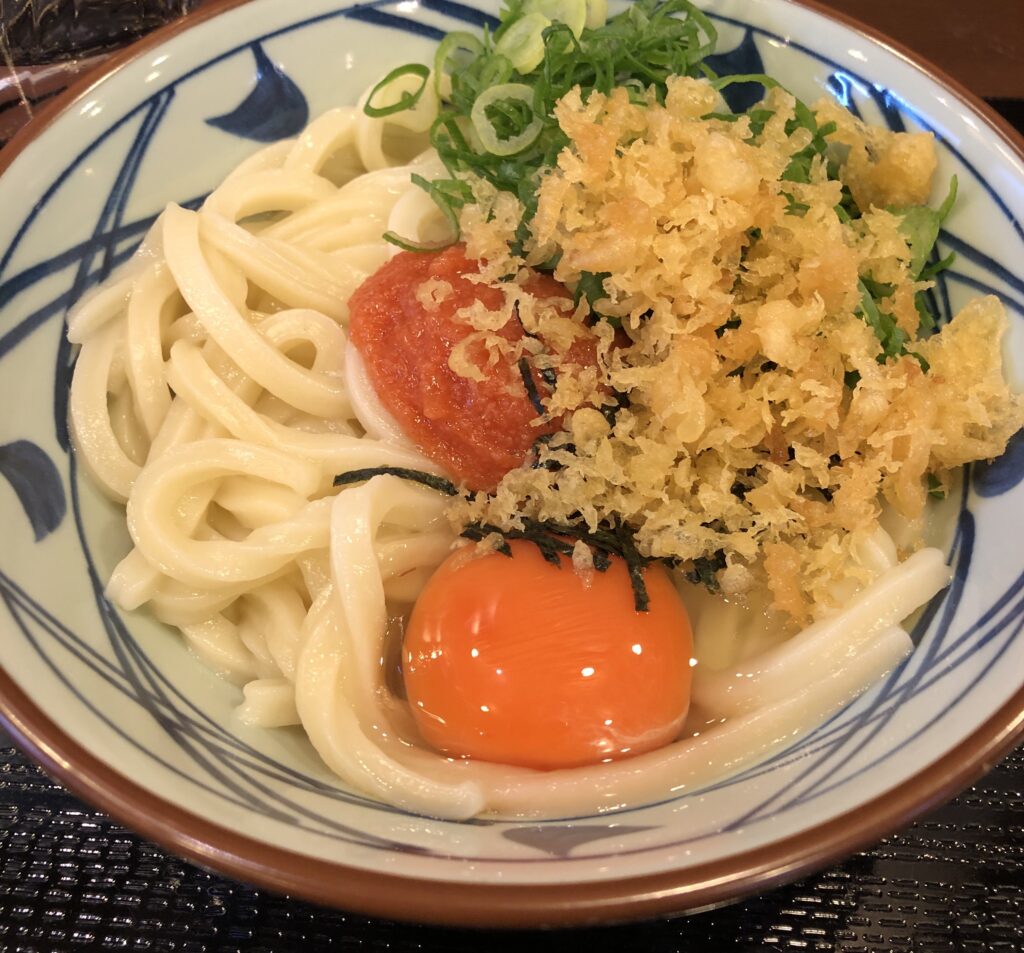
そば
Soba is another well-known Japanese food, and it is standard to eat cold buckwheat noodles in mid-summer with a sound.
Soba is more famous in the east of Japan, in Tokyo. Kanda in Tokyo, where Kanda Shrine is located, is especially famous.
Sometimes people are allergic to soba, so when you eat soba for the first time, check it out by getting soba-yu (buckwheat paste) at a restaurant and applying it to your skin. If you tell them you are eating soba for the first time, the restaurant will accommodate you.
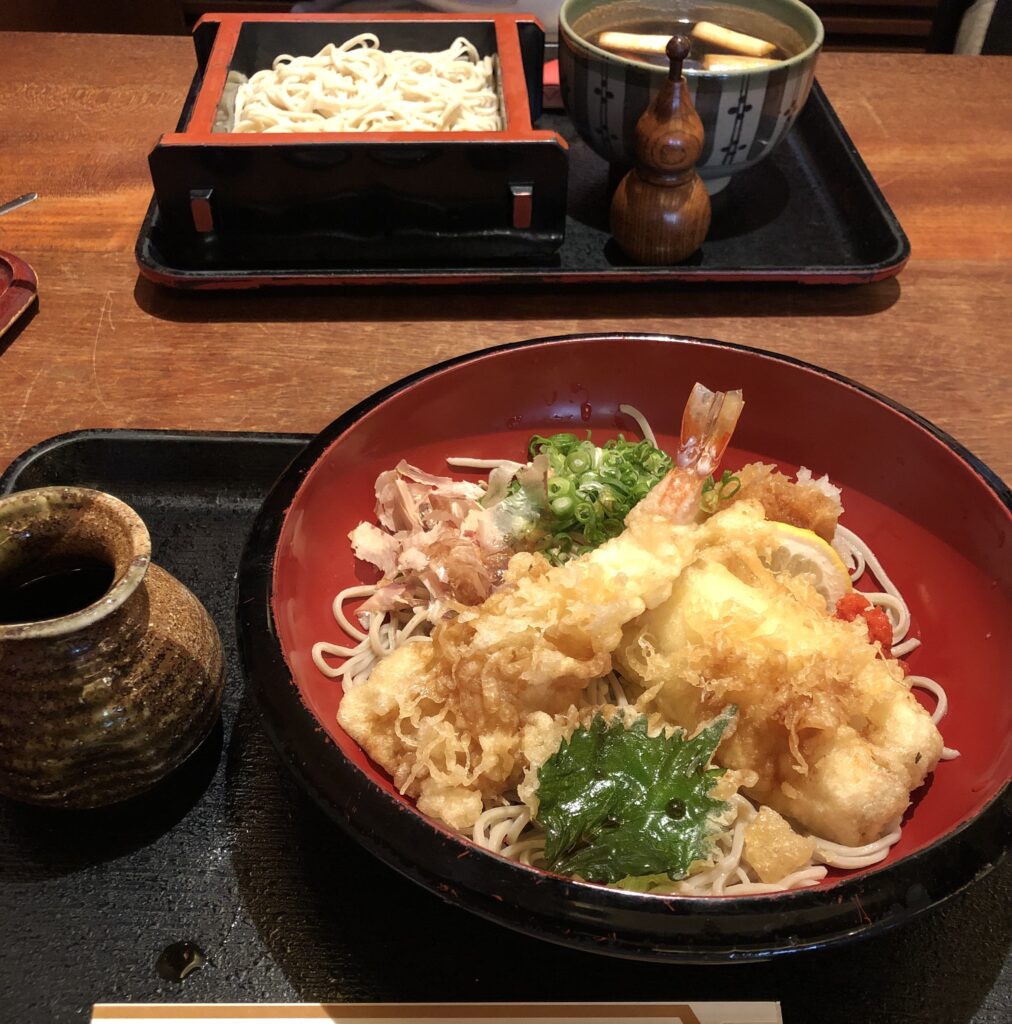
焼きそば
These noodles are made from a wheat base. They are usually fried with vegetables and meat and seasoned with sauce.
It is often sold at stalls at shrines and other festivals, and bread with yakisoba sandwiched between the noodles is also sold at convenience stores and bakeries. It is a casual food for the common people.
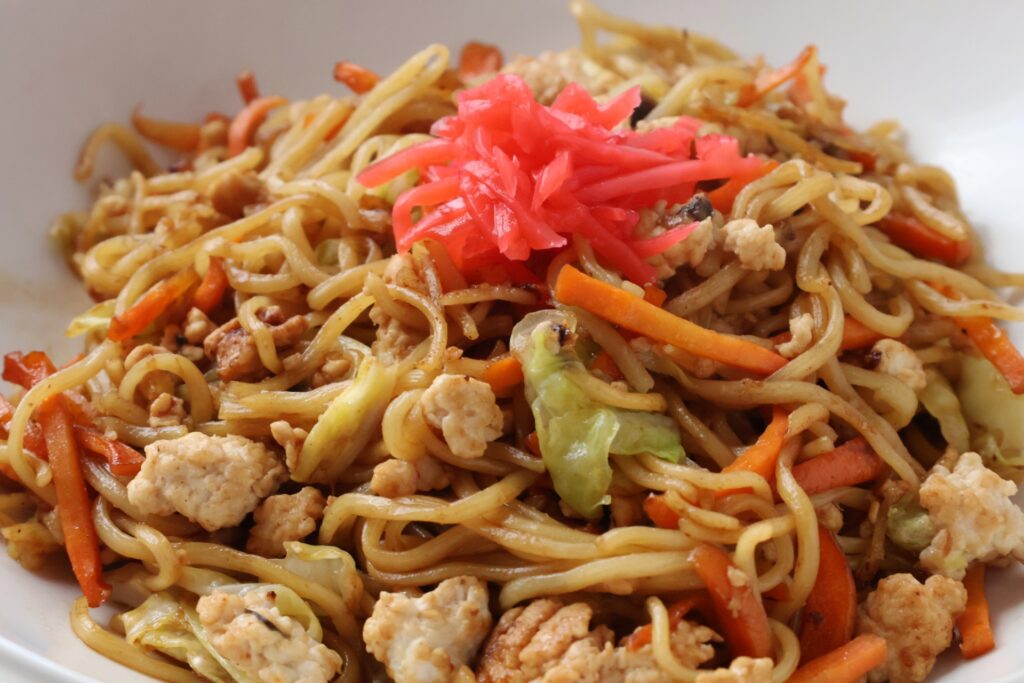
そうめん
Somen is a very thin white noodle. Although it is sometimes eaten at restaurants in the summer, it is generally eaten at home after boiling the dried noodles for 1 or 2 minutes.
The most famous brand of somen is Ibo Noito, which can be purchased at supermarkets. During the summer season, chilled somen noodles are eaten after being exposed to water and ice and dipped in noodle soup
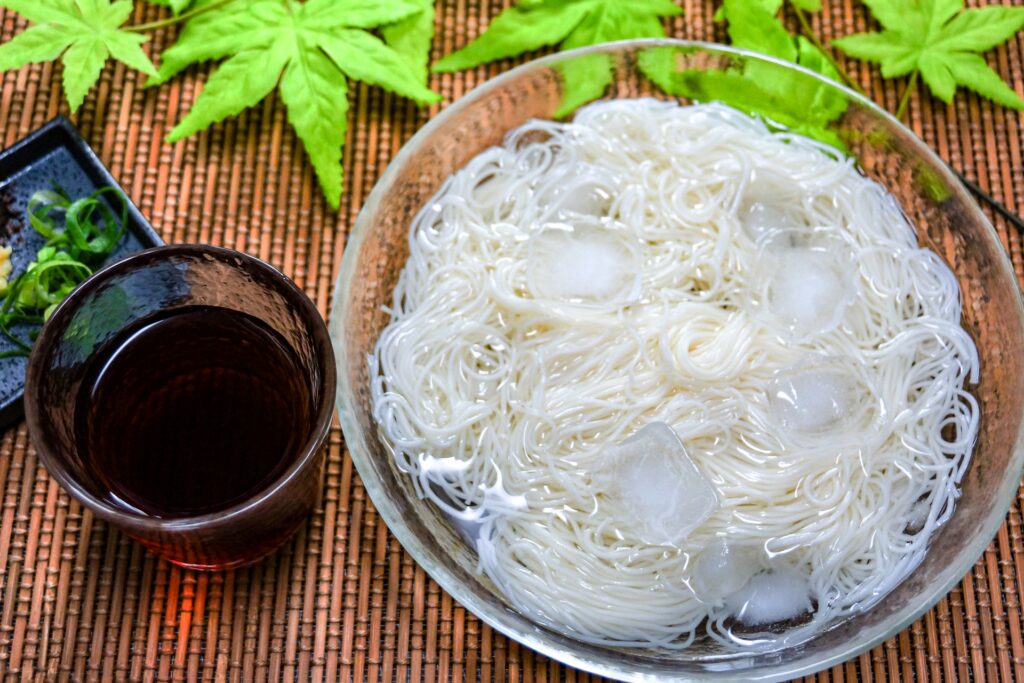
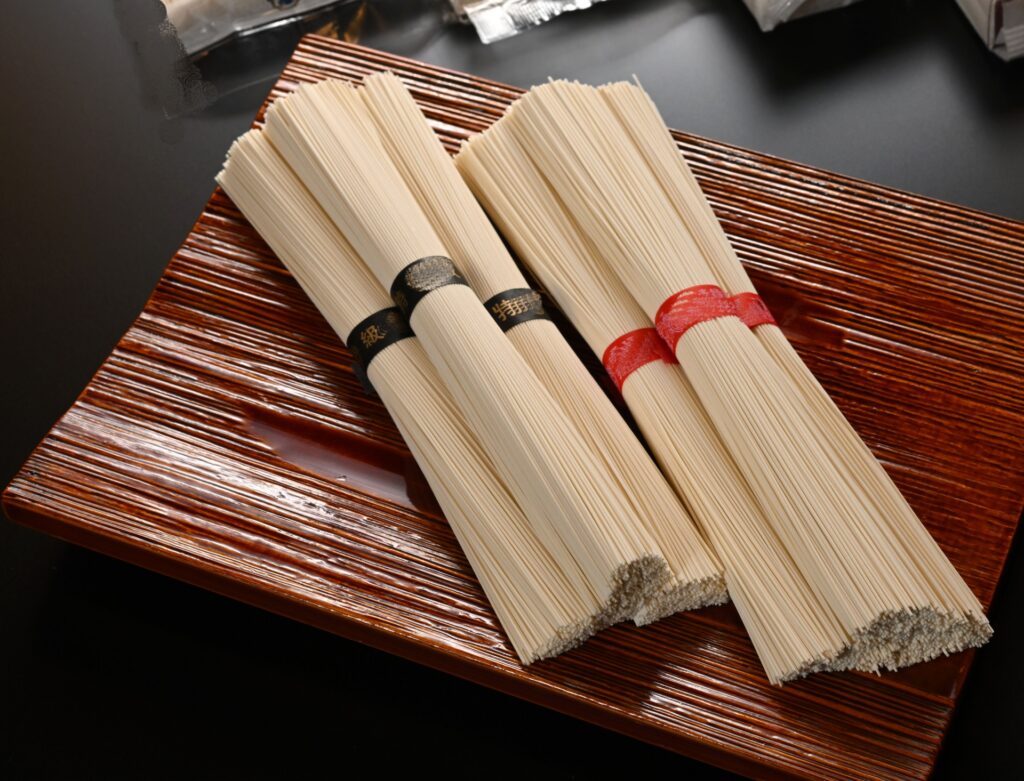
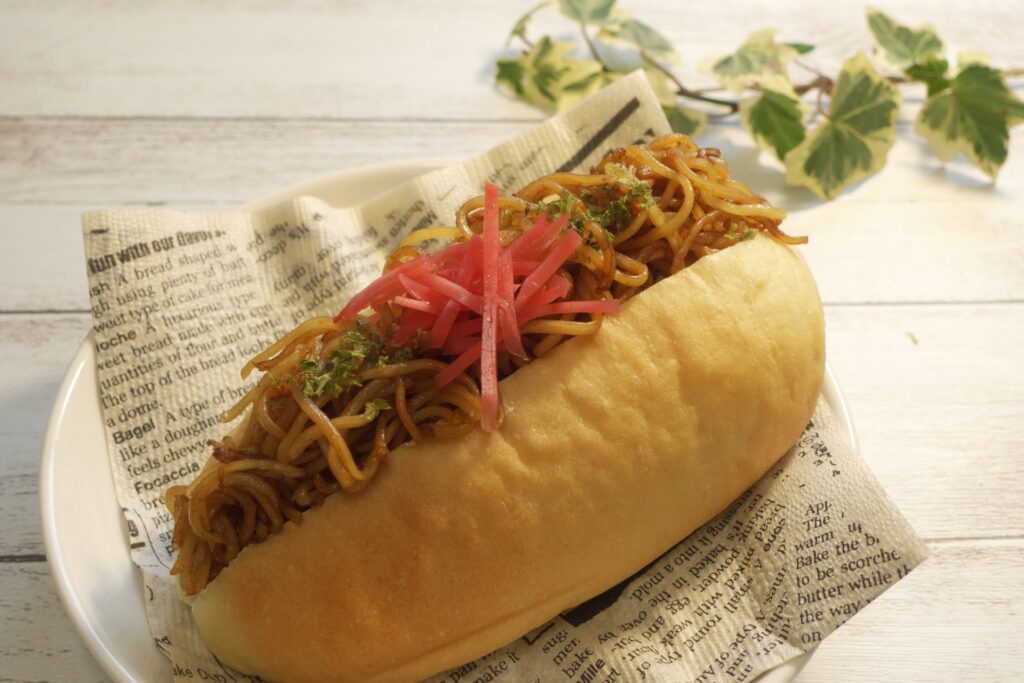
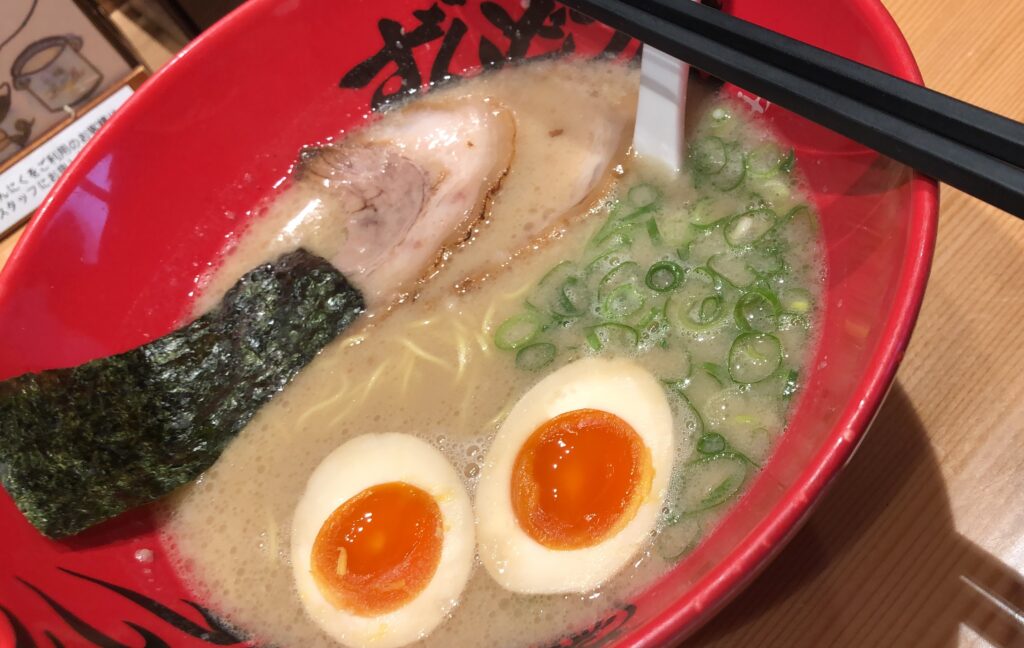
Konamon (粉もん)
There is a dish of the common people in Kansai called konamon.
Have you ever eaten octopus? Octopus is chewy and mixed in dishes. Sometimes I have to keep chewing it like gum lol.
Okonomiyaki (お好み焼き)
Okonomiyaki is a pancake-like pancake made by mixing cabbage, green onions, and other vegetables with flour. It is eaten with sauce, dried bonito flakes, mayonnaise, etc.
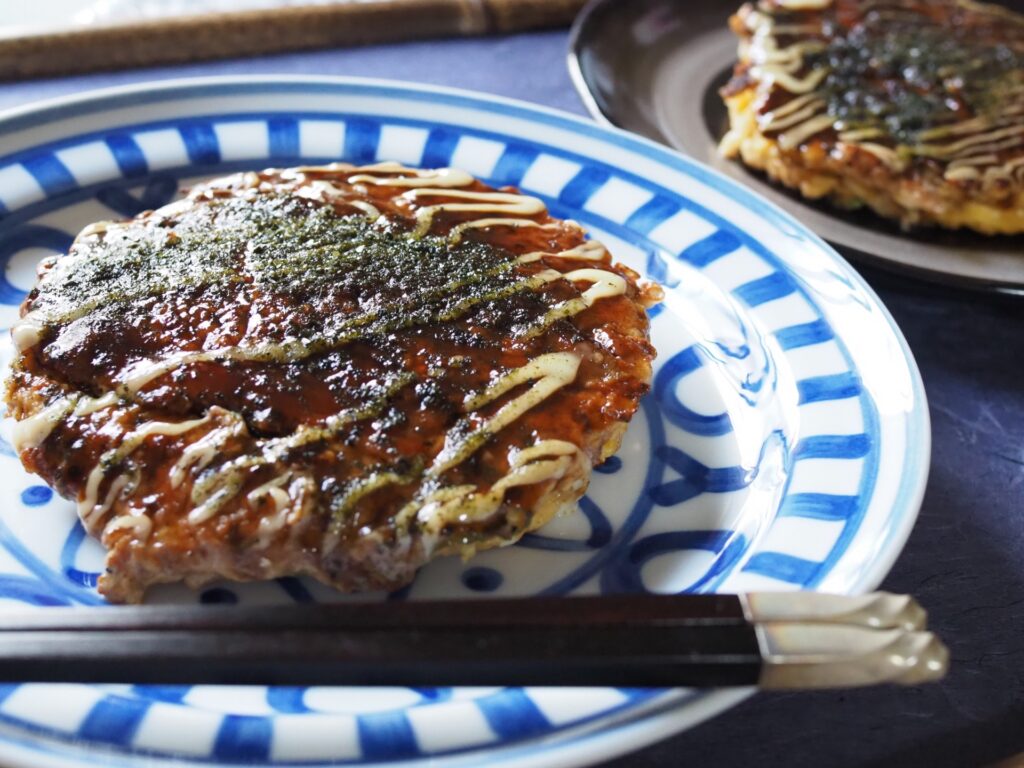
Takoyaki (たこ焼き)
Takoyaki is a food made by placing an octopus in a flour dough and baking it into a round shape. Families in Kansai have takoyaki cookers at home and enjoy making them with family and friends.
Recently, these takoyaki parties have been spreading outside of Kansai as well.
Osaka is the best place to eat takoyaki, but takoyaki restaurants can be found anywhere in the city.
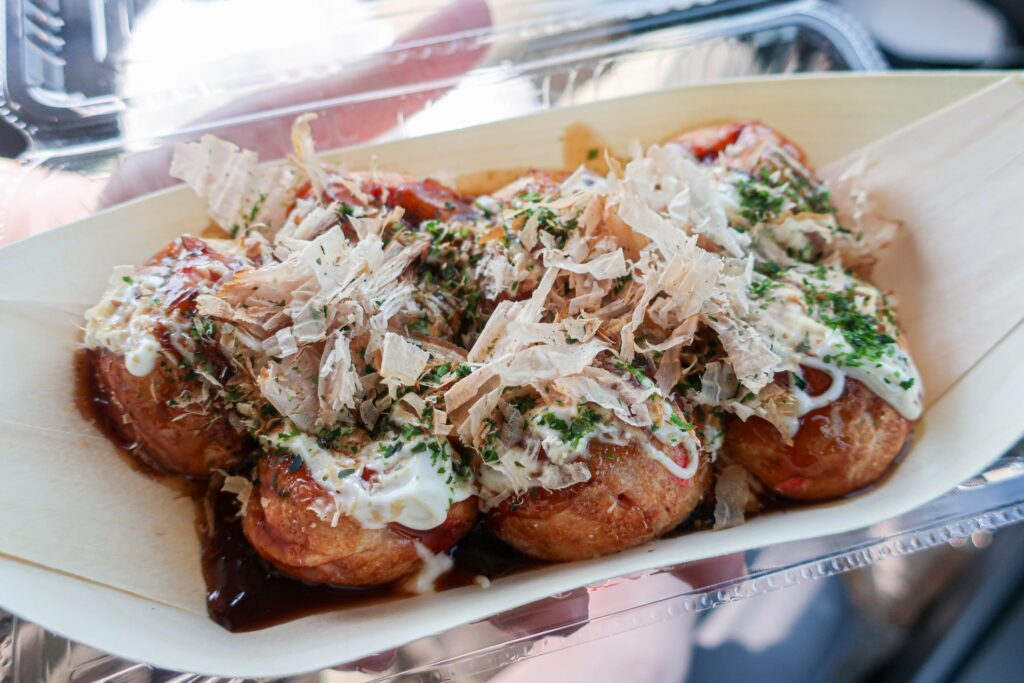
Nabe (Cooked in a pot)
Nabe cuisine is a dish to be eaten in the Japanese winter.
The soup is served in an earthenware pot with a variety of vegetables, meat, fish, etc. It is a healthy dish because you can eat a lot of vegetables and the oil falls off in the hot water. Only sukiyaki is often seasoned with sugar and other ingredients, so it may not be so healthy.
Oden is also popular as a home-style dish, with some convenience stores selling it in the winter, and it is also served at an izakaya (Japanese-style pub). The name changes depending on the type of meat in it, as in the case of a botan nabe (Boar meat).
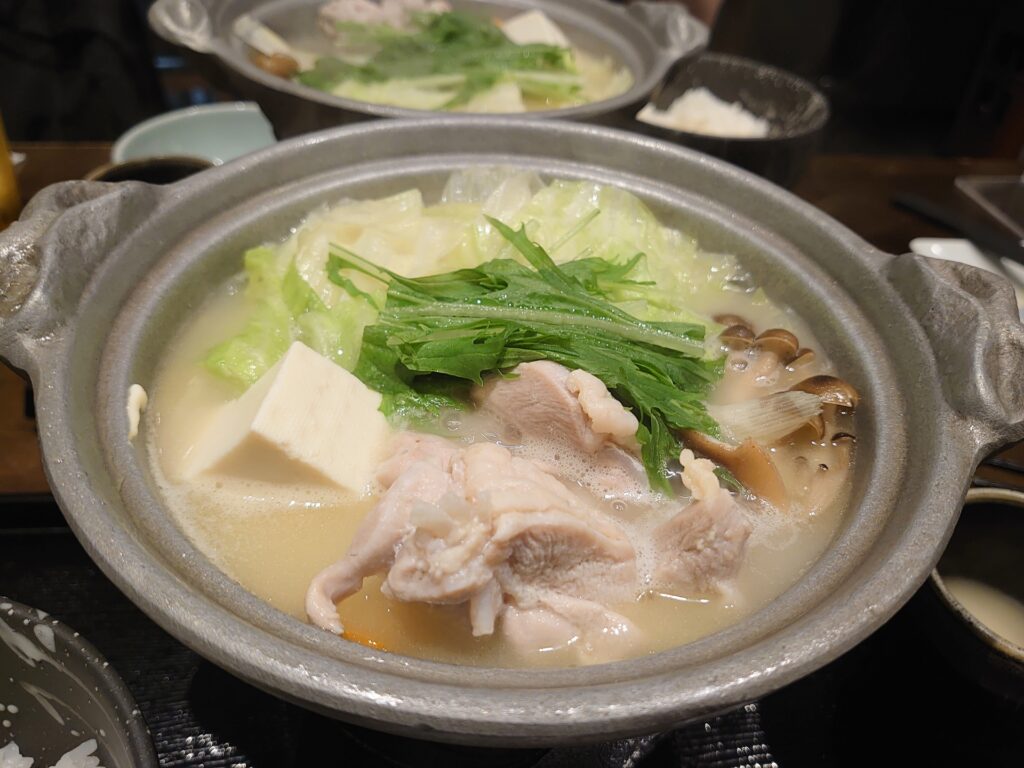
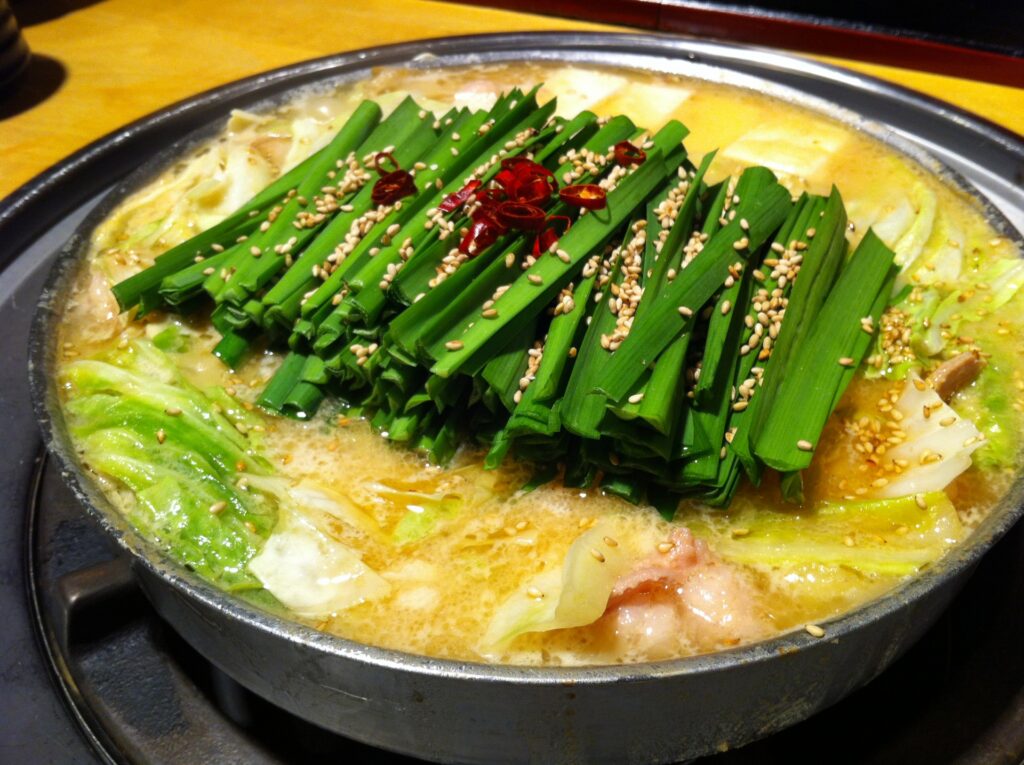
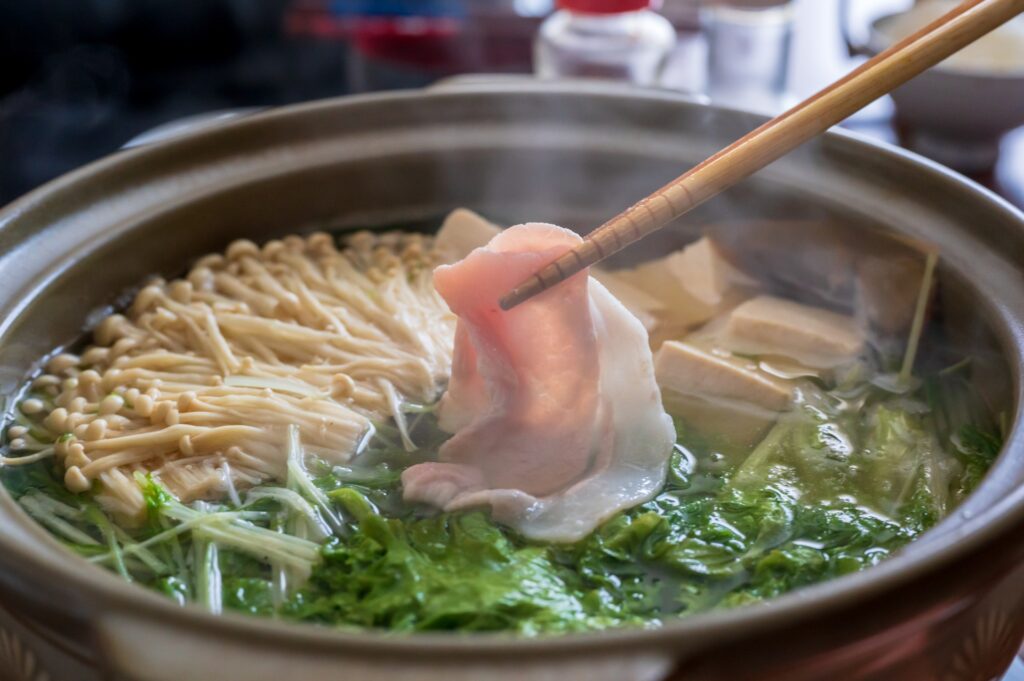
Yaki-niku, Yaki-tori
Yakiniku is basically grilled beef. Pork and chicken may also be grilled.
Yakitori is grilled chicken meat on skewers.
What is a little different compared to foreign meat-eating customs is that eating beef tongue and offal is popular among the Japanese. The beef tongue has little oil and is popularly eaten thinly sliced with lemon juice. Some restaurants mainly serve beef offal.
Yakitori also has various parts, and apart from skin and regular chicken meat, there is also tsukune, which is minced meat cooked and skewers of the internal organs. Many people eat yakitori with beer or other alcoholic beverages.
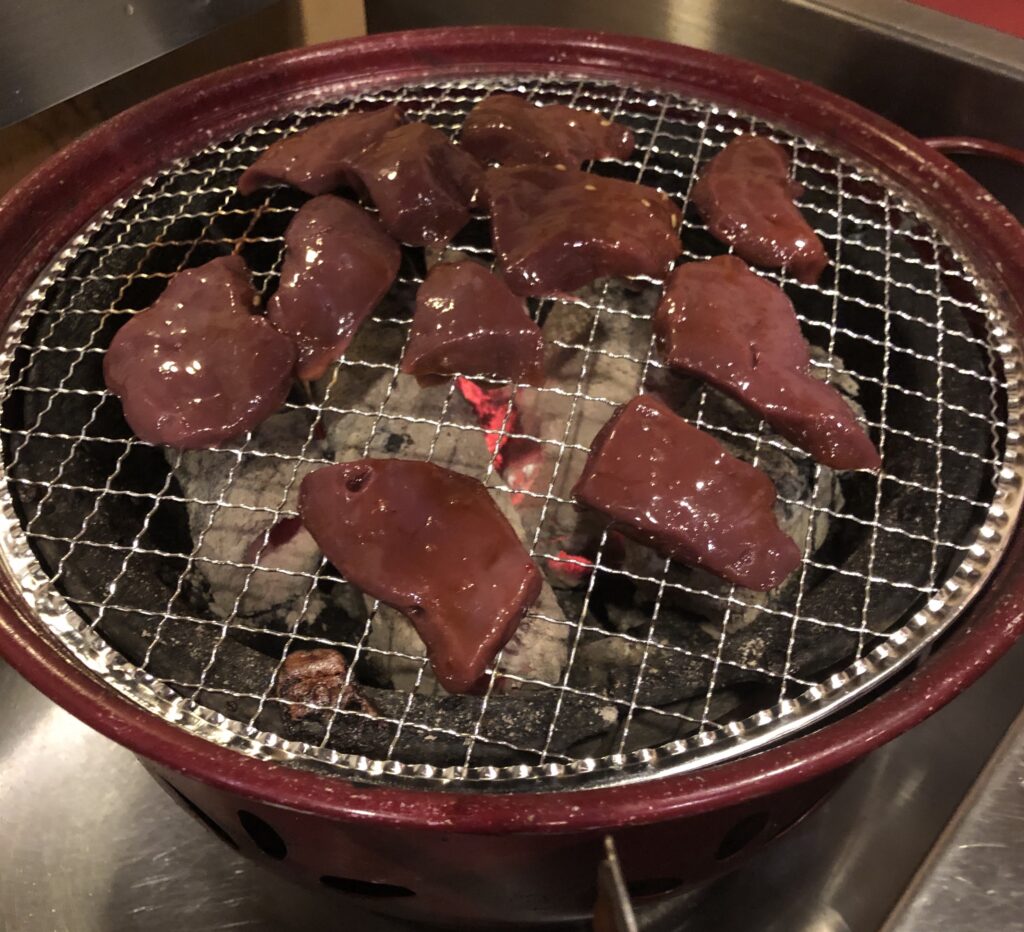
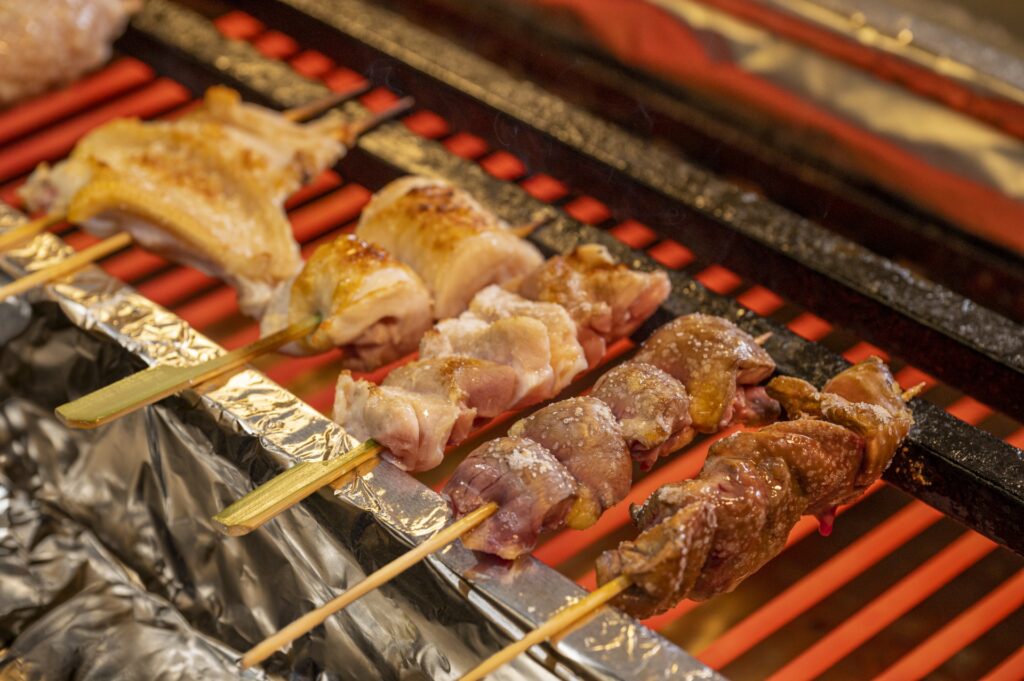
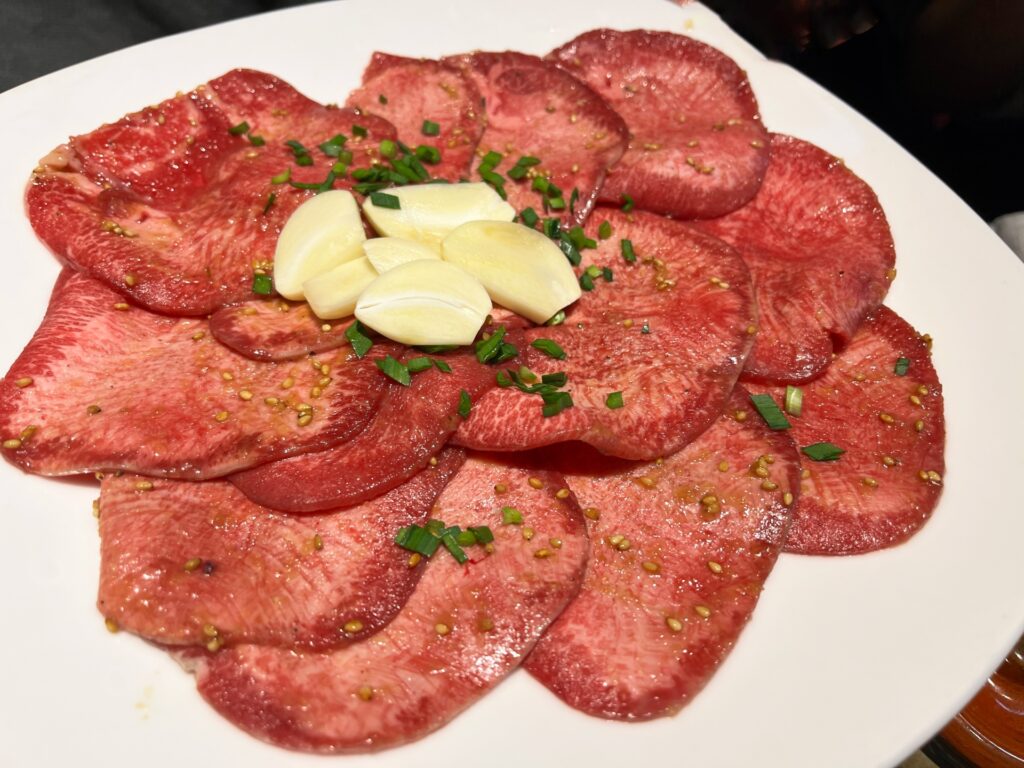
Unique menu of foreign origin
Curry (カレー)
Curry is a well-known Indian dish, but it is very spicy and can seem harsh to the Japanese who do not have sufficient tolerance for spices.
Curry with a Japanese twist is eaten at home and in restaurants.
If you want to eat curry like in India, it is recommended to go to an Indian restaurant.
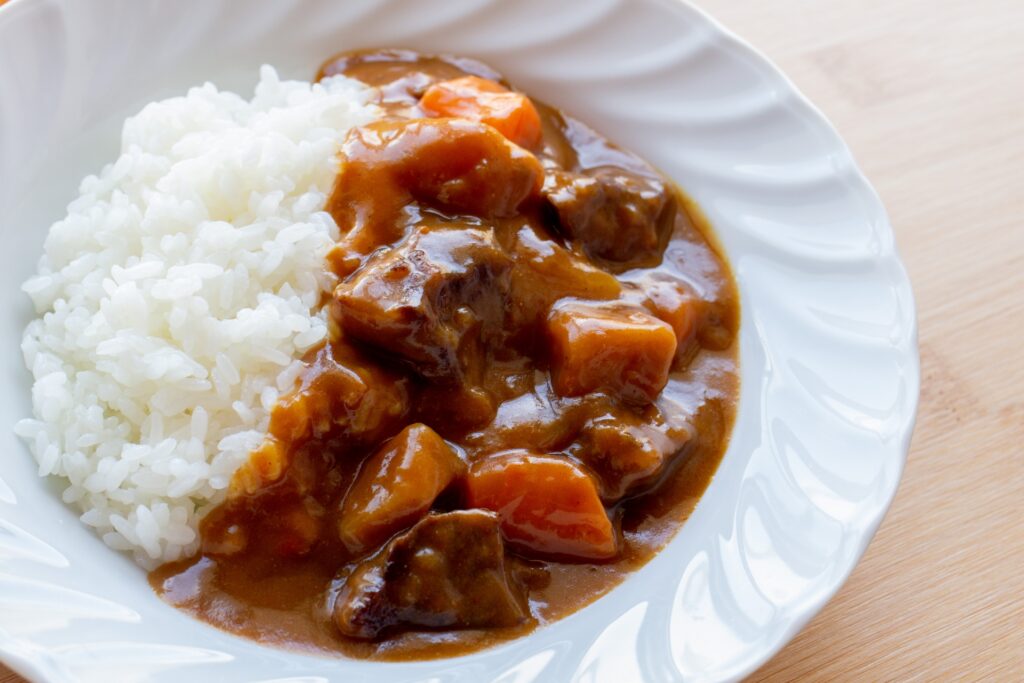
Cream Stew (クリームシチュー)
Cream stew is an adaptation of the milk and consommé-based dish eaten in Europe. The taste and ingredients are quite different from those eaten in Europe, but the lack of spices makes it easy to eat and popular with children.
Cream stew is rarely found on menus at restaurants, but it can easily be made at home by using a roux.
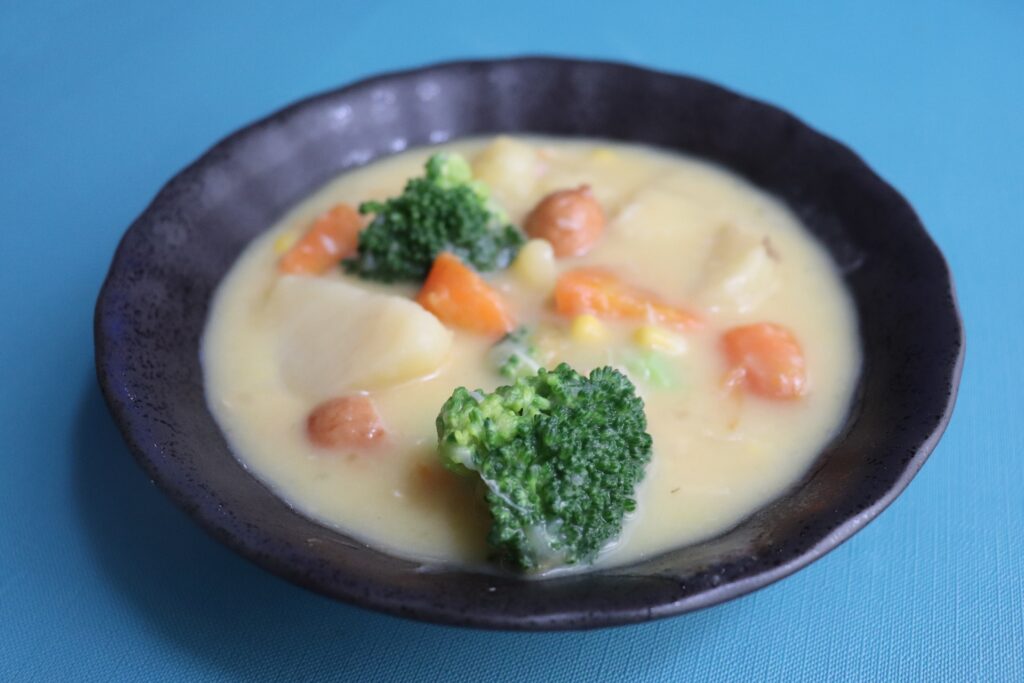
Omuraisu (オムライス)
Omelette is a dish of rice wrapped in an egg. The rice inside is sometimes seasoned with ketchup and onions.
Although it has an image of being a standard menu item for children, it is also eaten by adults as a lunch menu item or cooked at home.
Some restaurants offer a choice of sauces to pour over the eggs, so you can enjoy a variety of flavors in the same omelet.
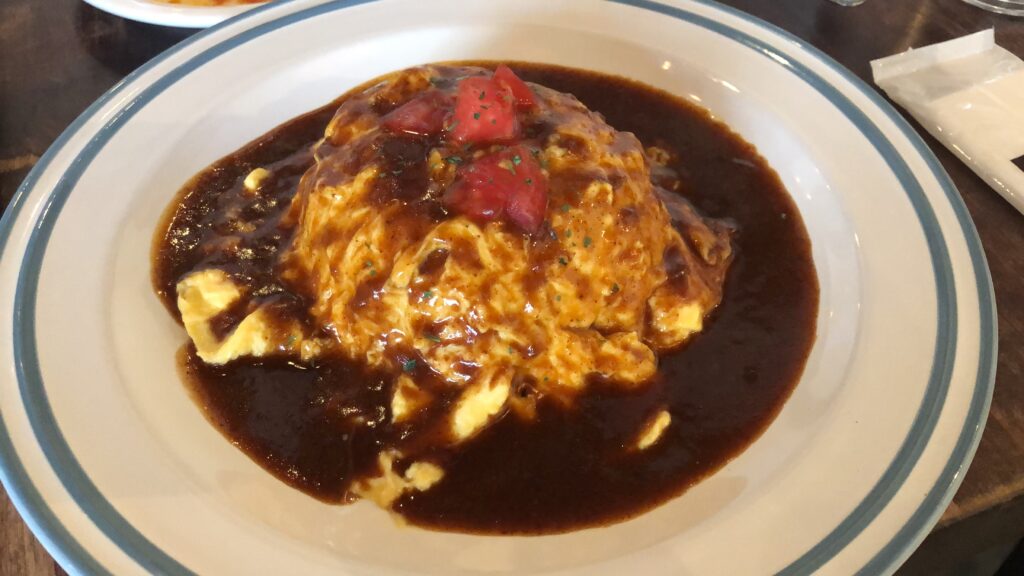
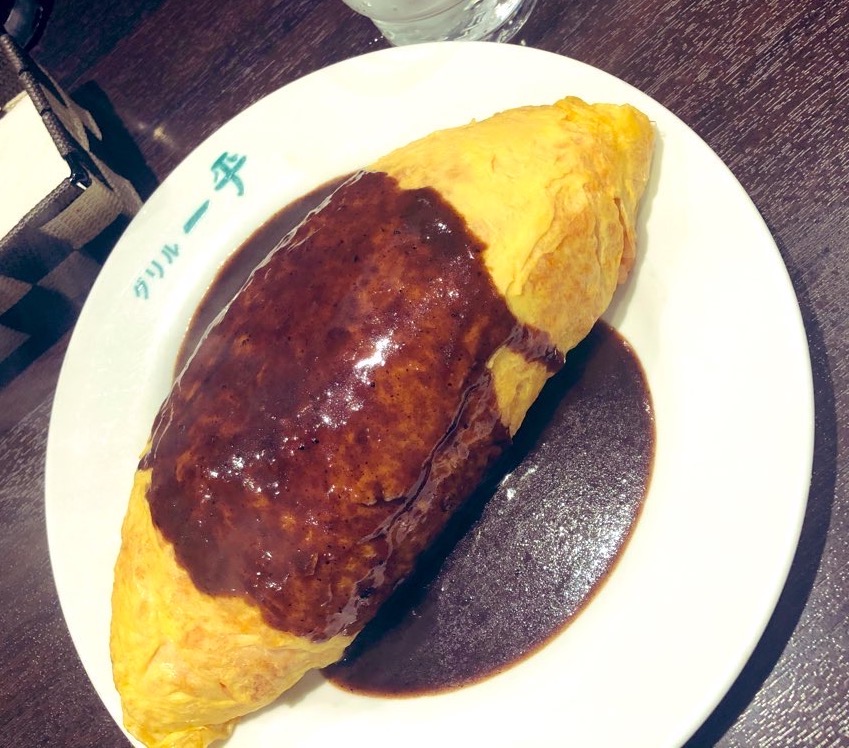
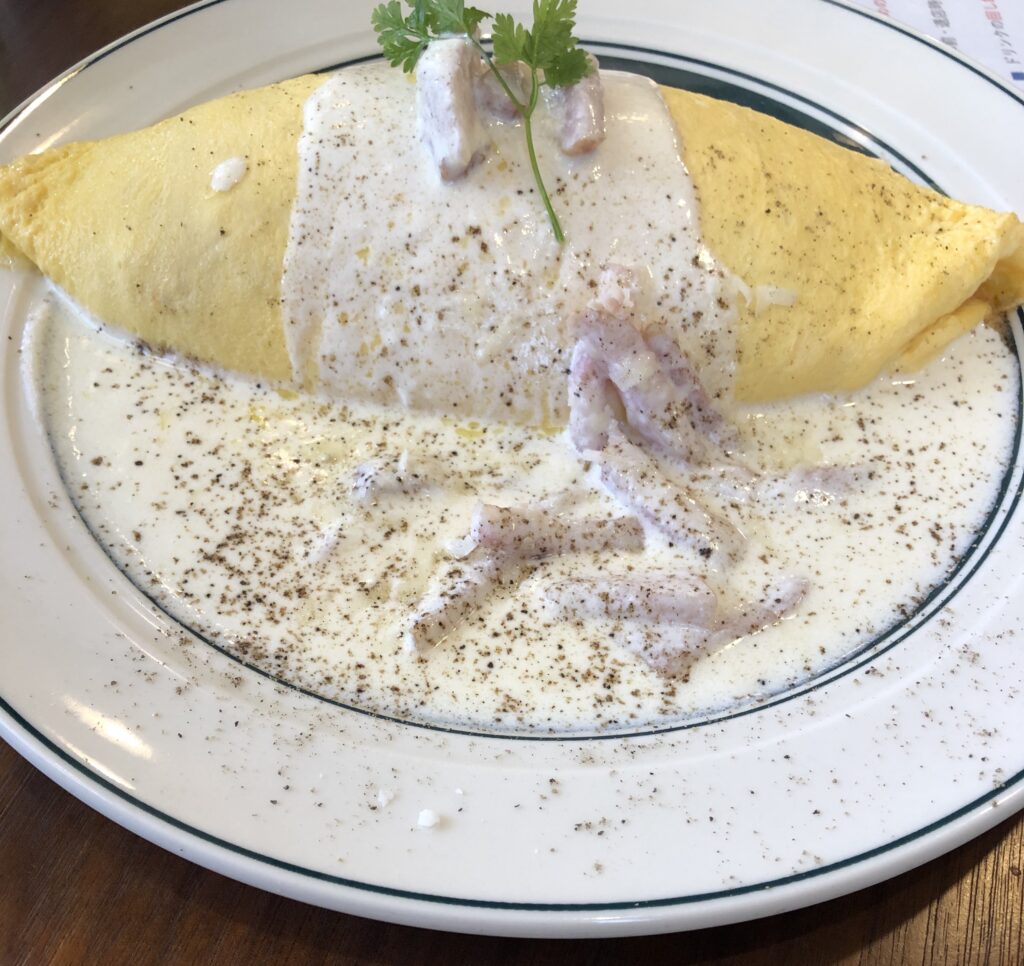
Napolitan-spaghetti (ナポリタン)
Neapolitan is a dish made by frying spaghetti and mixing it with ketchup and vegetables. It is a variation on the Italian pasta dish, similar to yakisoba noodles seasoned with ketchup.
It has the image of being served as a lunch menu in an old café, but in fact, it is often served as a menu item in a coffee shop. Or it may be made and eaten at home.
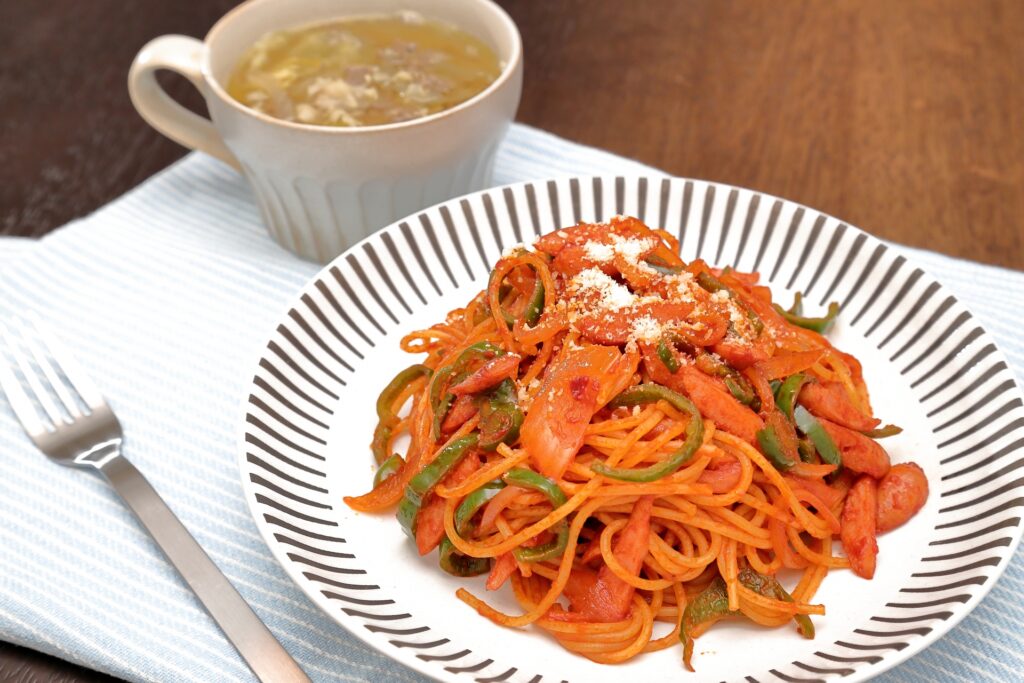
Doria (ドリア)
Doria is a gratin of rice topped with cream sauce or meat sauce and cheese.
This dish is an adaptation of Italian cuisine.
Some people don’t like it because the rice is soft and the soft stuff on it is soggy, but there are restaurants specializing in doria, and it is also available at Saizeria, a famous cheap and tasty restaurant in Japan.
The food at Saizeria is often surprising to Italians who have come to Japan and eaten it with pleasure, so please try the restaurant.
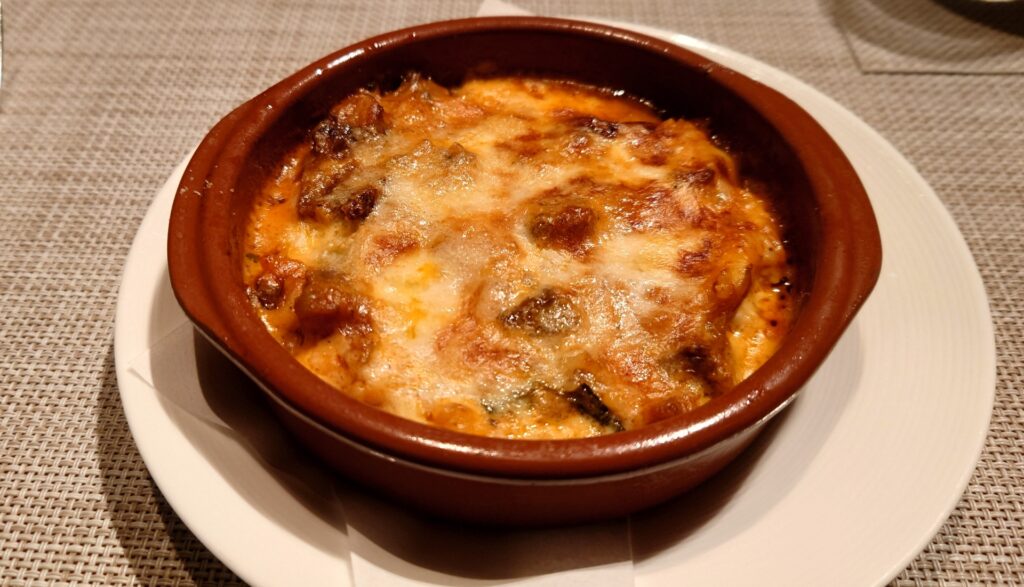
Sammary
There are many different kinds of food, and different restaurants have different tastes and cooking methods, so there is plenty to enjoy.
If you don’t understand, ask the waiter and he will help you any way he can. Japanese people are very kind to tourists who come to Japan to learn about the country.
Be careful about allergies, especially when it comes to soba (buckwheat noodles).
It may be a little scary when eating something you have never had before, but it is something that is eaten everyday, so please try it.
More detailed descriptions of each food will be added in the future.
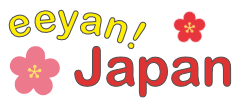
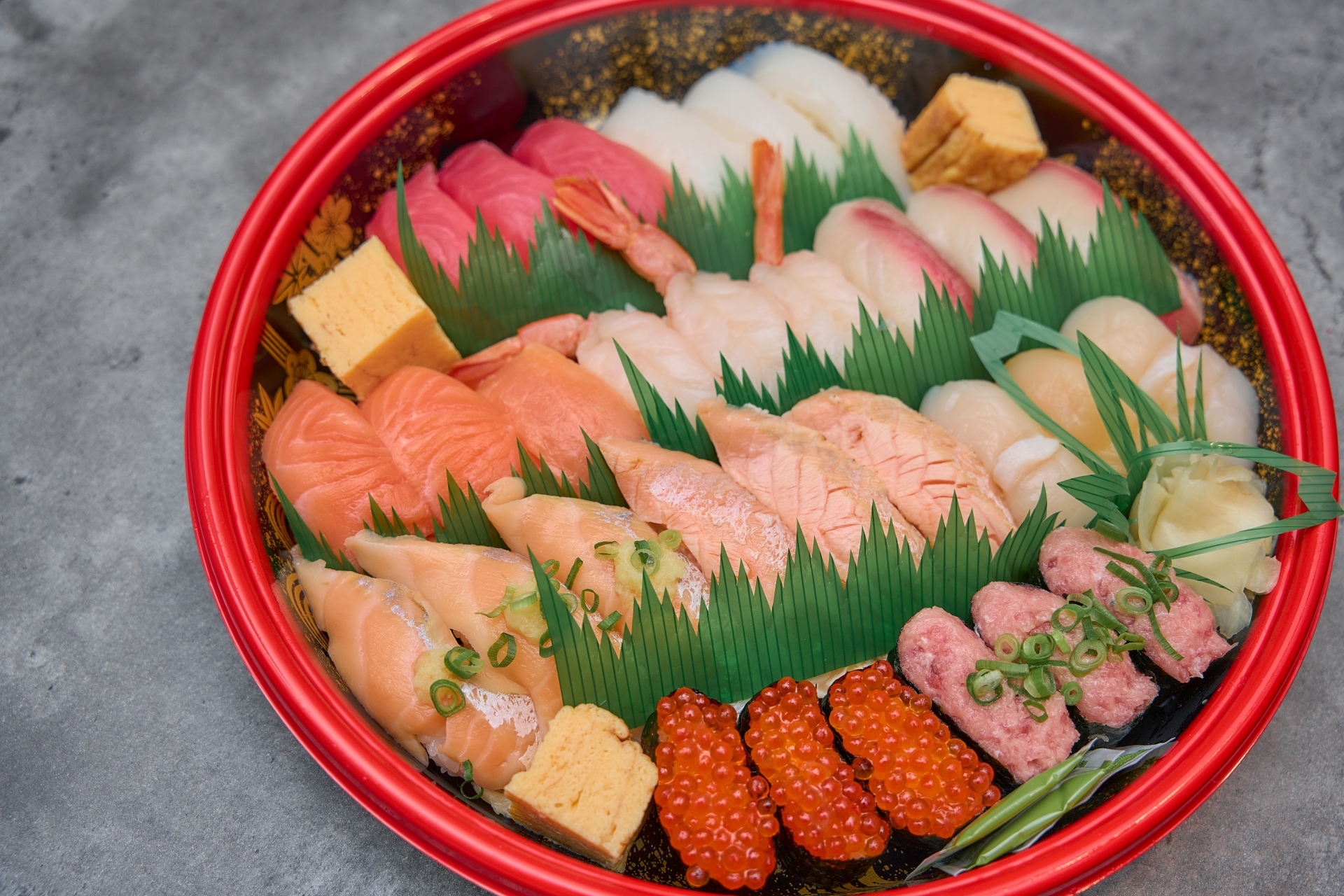
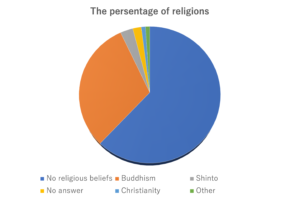


Comments